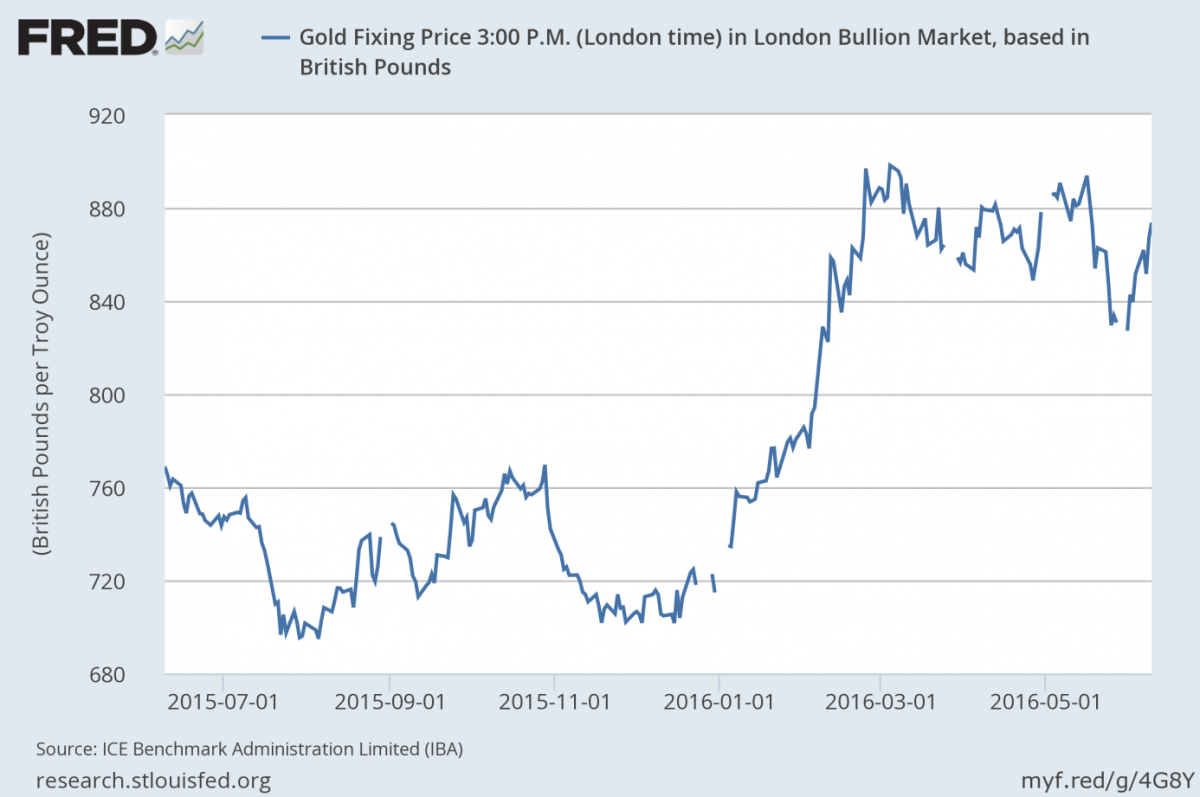Rising Odds Of Brexit And Gold

Next week, Britons will decide whether the United Kingdom will remain within the European Union or leave. What does all this mean for the gold market?
Odds of Brexit Rise
We have already written about the consequences of Brexit for the gold market. However, a lot has changed since our last article on the topic. In June, chances of a divorce between the UK and the EU have risen significantly. Actually, supporters of Brexit have moved into the lead, according to most of the recent polls. For example, the online survey by TNS showed that 43 percent of the respondents backed Brexit, while 41 percent supported continued EU membership. Similarly, an ICM online poll showed that 48 percent of Britons were in favor of leaving, while only 43 percent opted to remain. And a YouGov poll from June 1-2 showed that 45 percent of Britons would vote to leave the EU compared with 41 percent who would vote to stay in. Importantly, it was a phone survey – phone polls were always more supportive for remaining. However, the latest YouGov poll from June 5-6 showed that the Remain camp lead again by one percentage point. The Economist’s Brexit Tracker from June 10 shows that 43 percent voters are in favor of a divorce, while 42 percent support remaining within the EU. If this trend continues, supporters of the UK’s leaving the EU are going to win. However, around 12 percent of people are still undecided. Given that the polls are head to head, the undecided Britons are likely to determine the outcome. It means that the referendum is basically a coin toss.
Brexit and Gold
The increased chances of Brexit are good news for the gold market. Indeed, the price of gold in British pounds was rising in June due to the uncertainty over Brexit after a decline in the second half of May, as one can see in the chart below.
Chart 1: The price of gold in British pounds over the last 12 months.
What would the effects of Brexit on the yellow metal be? Gold may find support in Brexit as it is the major political event of 2016 (as the UK may become the first country ever to leave the EU). If the UK votes to leave the EU, the uncertainty and volatility will rise and may remain at elevated levels for years. Therefore, in such a scenario, we can expect a flight to safety assets, including gold.
Gold’s Role in Survival Analysis of Brexit
As there is no precedent of Brexit, it is impossible to predict what will happen after Brexit. This is why John Nugée, the former chief manager of reserves at the Bank of England, argues in the last edition of the WGC’s Gold Investor that usual risk analysis techniques don’t offer any guidance. Instead, investors should adopt a survival analysis and analyze whether the portfolio will survive the worst scenario. According to him, “whatever the outcome, an investment in gold is unlikely to underperform and in some scenarios might outperform strongly”. It is true that if Britons vote to remain, there is no significant change. But this means that the current mildly upward trend in the price of gold may stay in place due to weak global economic growth and low real interest rates.
To sum up, the British referendum on the United Kingdom’s membership in the European Union will be held in less than two weeks. The odds of Brexit have risen recently, which is good news for the gold market, as the divorce between the UK and the EU will increase the uncertainty and volatility, boosting safe-haven demand for gold. Therefore, portfolio analysis suggests that it may be wise to own some gold, however, investors should remember the bullish bias of the WGC’s articles and that the price of gold usually reacts much stronger to U.S. than foreign developments.
Disclaimer: Please note that the aim of the above analysis is to discuss the likely long-term impact of the featured phenomenon on the price of gold and this analysis does not indicate (nor does it aim to do so) whether gold is likely to move higher or lower in the short- or medium term. In order to determine the latter, many additional factors need to be considered (i.e. sentiment, chart patterns, cycles, indicators, ratios, self-similar patterns and more) and we are taking them into account (and discussing the short- and medium-term outlook) in our trading alerts.



















